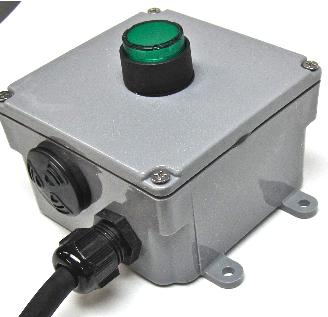Rinsing Manual
Appendix C: Water Control Options
Regardless of the type of rinse tank arrangement employed, you can generally improve water use by adjusting inlet water flow rates so that they correspond to the requirements of the process. When use and usage are perfectly matched, the rinse water use for a given work load and tank arrangement is minimized. Several methods of coordinating water use and work load are discussed in this section. Some methods are applicable to a broad range of plating operations, while others are more relevant to specific situations (e.g. some are appropriate for small manual operations, others for large automated machines, etc.). It is sometimes possible to combine two or more of these methods for additional savings.Manual control: It is, of course, possible to control the water flow rate into a rinse tank by simply having an operator open, close and adjust the water flow based on a schedule (e.g., open at start of shift and closed at end of shift), or in response to observations (e.g., when rinse tank looks cloudy). This method of control is obviously dependent on the operator's level of attention, and often results in inconsistent water use, resulting in time periods when water is wasted interspersed with time periods when parts are insufficiently rinsed.
Automated devices can provide a more predictable level of performance. They can range widely in sophistication and cost. The following devices are discussed below:
- Flow restrictors
- Conductivity controls
- Timer rinse controls
- Solenoid valves on automatic machines
Flow restrictors: Flow restrictors are inexpensive devices that are connected in-line with the tank's water inlet piping to regulate the flow of water through the pipe. They are typically an elastomer washer that flexes under pressure, so that the higher the water pressure, the smaller the hole available for flow passage. Therefore, they maintain a relatively constant flow under variable water pressures. Flow restrictors are available in a wide range of sizes (0.1 gpm to more than 10 gpm). The smaller sized restrictors are most commonly used with multiple counterflow rinse tank arrangements and the larger ones are commonly used with single immersion rinses. Some restrictors aerate the water as it passes through, in a manner similar to a kitchen faucet (Venturi effect).
Conductivity controls: Flow restrictors can be used with nearly all rinse systems, but a possible exception is a rinse tank equipped with a conductivity controller. With conductivity controllers, the instantaneous water flow rate is unimportant since the controller stops water flow based on the low conductivity set point of the controller and the conductivity of the water in the rinse tank. Therefore, restricting the flow will only reduce the time needed to dilute the rinse water to the conductivity set point and will not affect the total volume of water used.
Flow restrictors as a standalone method of rinse water control are only effective with plating lines that have constant production rates, such as automatic plating machines. Even in such cases, to use water efficiently, the plater must have a means of stopping water flow during non-production periods. With variable production rates, flow restrictors alone will not provide the necessary coordination of rinse water need and use. One method for improving this coordination is to install a timer rinse control.

Figure 16. Manual timer rinse control. Source: Gizmo Engineering.

